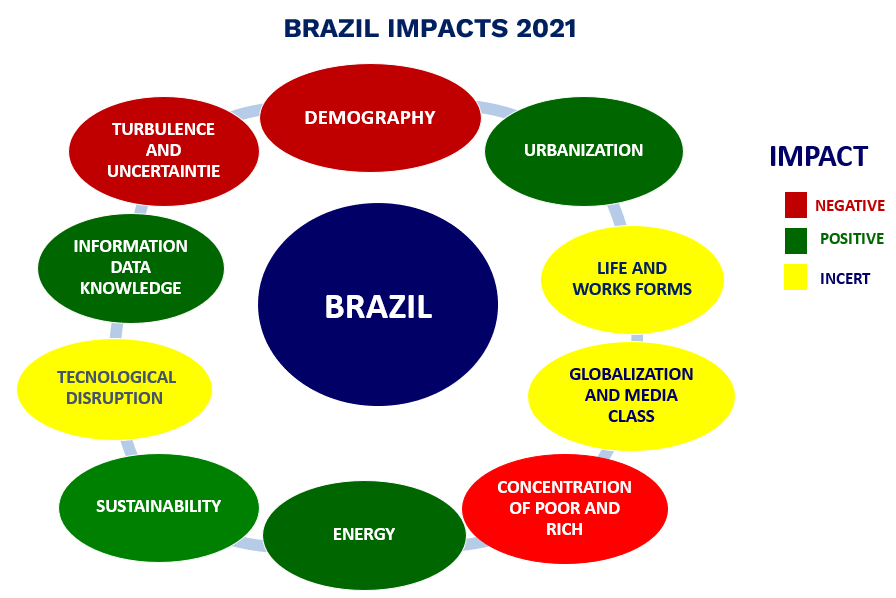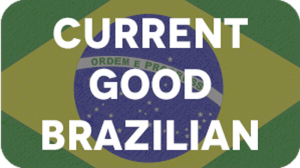Themes

- Innovation management
- Bioeconomy and sustainability ESG
- Visions megatrends
- How to build a GOOD BRAZIL?
-
Innovation management
The innovative process takes place in the 5 steps of innovation:
IPDES focuses on mentoring the organization’s leadership in these three fields of activity
The innovation management provides for the innovative process, the introduction into the organization and the innovative culture in the organization.
-
- Formulation of the problem poorly structured
- Production of ideas (creative phase)
- Establishment of criteria and evaluation, choosing the best option (evaluation phase)
- Prototyping, solution development (technical, economic and market phase)
- Business model and market introduction (launch and acceleration)
The introduction in the organization of the process, requires to develop the vision of the business and its innovative ambition. It depends deeply on the leadership’s commitment to the principles of innovation, its orientation and its purpose.
IPDES mentors the leadership for the transformation of the mindset.
The implementation of an Innovative Culture in the organization, permeates the leaders and settles in the organization through established policies that promote internal and external creativity.
IPDES mentors leadership how to develop internally and or with partnerships the institutionalized innovative process, developing platforms for startups, accelerators or similar
IPDES conducts workshops, lectures, seminars to motivate the process.
-
-
Bioeconomy and sustainability ESG
God created man and woman in his image and subjected animals, vegetables and land to them.
Gen 1,27-31; 9, 1-13When we recognize that Love also intervenes in Nature, we have more hope. The history of humanity teaches us that only what was created in the light of Love, contributed to the true progress of humanity…
If we value nature only from the point of view of “what nature gives us to eat, what gives us to drink, what it gives us to wear or to win”, then we do not see God in this environment. In a Nature treated only as an object of utility, the creative torrent ceases. The German poet Goethe said that we only approach Nature through love. …,
and Saint Augustine saw the face of God shine in the beauty of Nature. … “
Konrad Guenther, Nature, Miracle of God, Editions Improvements, 1922 – German naturalist who was in Brazil
Respect for Nature, Sustainability, Climate Change and now ESG, are principles that IPDES has addressed in all of its work. Accompanying companies in their ventures, sectors in their policies and governments and global agreements in their dimensions, they had our attention.
We currently follow the concept that humanity, after exploring the Planet with knowledge, energy and information (see Gigatrends), has reached the limit of its sustainability.
If we all wanted to have the American standard of living we would need 5 Planets, in the European style 3 Planets, but in fact we only have one Planet to live on (One Planet to Live -OPL). In this view, we are moving from an economy based on energy and products of fossil origin to an economy of biological origin. In this journey, the use of raw materials and processes will be increasingly recyclable and sustainable. The concept Towards Bioeconomy, can be seen in the following Infographics:




-
Visions megatrends
Giga and Megatrends BRAZIL
20211) Gigatrends and Megatrends difference
a) Gigatrends transformational evolutions – centennial – millennial
b) Megatrends transformational evolutions – decennial and centennial
c) Megatrends strongly influence Megatrends
2) Gigatrends
a) Demography population growth from 1000 years before Christ occurred until 1800 after Christ and was below 1 billion inhabitants.
From 1850, the current situation grows exponentially to 7.8 billion inhabitants.
This exponential growth, how far will it go ??
(The new Reality Jonas / Jonathan Salk) will probably have its limit between 2050-2070 in the order of 10 to 12 billion inhabitants.
Curve in S (sigma) inflection point now. Why?
Planet Earth is a closed and not an open system. Drosophila melanogaster; Sacharomiceae cerevisae
b) Energy until 1850 a total primary energy consumed (TPES) worldwide was in the order of 5 Tera Watt hour TWh (17 GJh), currently we are in the order of 160,000 TWh.The exponential growth in consumption came from the biomass base (5 TWh in 1850 = 100% today less than 10%). Coal, oil, gas, nuc, today represent = 89% renewable = 11%)
Worldwide electricity generation = 15% of primary energy consumption.
(toe equivalent tonnes of oil, 1 ton firewood = 0.31 oil = 0.3 toe)
160,000 tWh = 567,000 GigaJoules (3.5) = approx. 600 ExaJoules
Per capita consumption
USA = 87,200 kWh / c EU = 40,800 kWh /c China = 18,000 LAC = 14,400
TPES = 160,000 tWh Ren = 21,685 (13.3%)
Transp = 27% Industry = 28% Residen = 36% Agri and other = 9%
Consuming in the USA Style 05 planets and EU Style 0 3 OPL Planets
174 petaWatts solar 30% reflection 70% (70% water, 30% earth) 3.8 million EJ
What the sun gives us in 1 hour the world today uses in 1 year
3000EJ photosynthesis
c) Information / Data: 150,000 years ago, evolution was linear, knowledge was passed from generation to generation at horse speed and verbal content.
Today we have exponential knowledge at instant speeds.
We create 5 Exabytes (1 billion Gigabytes) every 2 years, 2010 statistics.
After 3 years, we create 1 billion Gigabytes every 10 minutes, reducing the price of knowledge every moment.
It is not surprising that we are exhausted, not being able to follow exponential evolution with our linear minds.
A study by British anthropologist Robin Dunbar of the University of Oxford, Path limits the number of connections for each user to 150 people. This is considered to be the maximum number of trustworthy relationships that a person can have, and it is a direct function of our biology.
With this restriction, I admit the hypothesis that information and data are doomed to the same fate as evolution in the S curve, energy and population and I define Information and data as a Gigatrend
d) The three Gigatrends act among themselves, and other strong tendencies form the Megatrends at centenary and decades level.
3) Megatrends
- Demography
- Energy
- Information – Knowledge- Long life learning, ways of learning,
- Urbanization – 60% urban, BR (50% city> 400 thousand inhabitants), smart city, Log
- Ways of work / life – employment, 60+, global health, I don´t know, leisure
- Sustainability and climate change – econo, social, environment, temp. global
- Technological disruptions gigas and nano, + mdo qualif. X + mdodesq, + digi, + virtu
- Globalization and middle class – on a global scale, prod + regional, accessibility, common,
- Concentration of rich and poor > poverty X concentration of wealth, hunger, misery.
- VUCA volatility, uncertainty, complexity, ambiguity
4) Brazil Impacts 2021

-
How to build a GOOD BRAZIL?
What is it to be a GOOD BRAZILIAN today?
What are your references to a GOOD BRAZILIAN?Instigating questions that we have difficulties in answering. Through this Initiative we encourage to find answers to these two crucial questions to have a BOM Brazil.
We want to bring references to both GOOD BRAZILIAN from the History, as well as, CURRENT GOOD BRAZILIAN.
BLOG Check out in BLOG
See more:
LATEST PUBLICATIONS:
© Todos os direitos reservados - IPDES | by Next4.

















